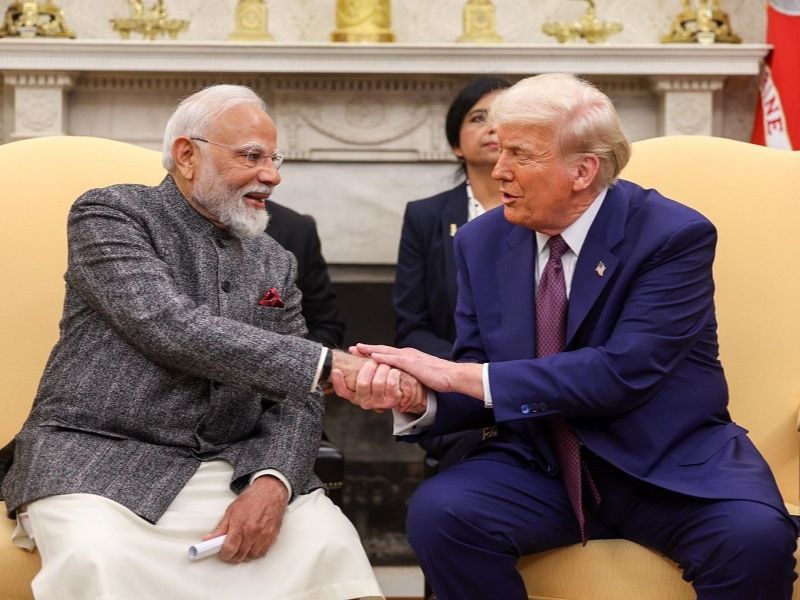.png)

Ajay Srivastava, founder of Global Trade Research Initiative, is an ex-Indian Trade Service officer with expertise in WTO and FTA negotiations.
March 2, 2025 at 2:57 PM IST
Donald Trump’s return to the White House is already sending tremors through global trade corridors, but few economies feel the pressure quite like India. With bilateral trade crossing $125 billion in 2024, the stakes have only grown since the last time Trump’s tariffsword swung at New Delhi.
India’s trade officials know the drill by now. They have danced this uneasy tango with Trump before, in 2018 and 2019, when steel and aluminium tariffs forced hurried recalibrations.
This time, the threat is broader and more pointed — reciprocal tariffs designed to penalise nations with “unfair” trade barriers. India fits Trump’s narrative almost too neatly, thanks to its higher average tariffs, many of them fully compliant with WTO rules.
The government’s choices range from defiance to deftness, with some paths leading to confrontation and others to quiet concessions. None are painless.
Some in policy circles continue to flirt with the idea of fast-tracking a bilateral free trade agreement with the US. This is a fantasy best left untouched.
Trump’s track record — tearing apart NAFTA only to force Canada and Mexico into the revised USMCA — shows exactly how he views trade deals. They are not partnerships; they are leverage instruments.
Any FTA India signs under duress would come with conditions that cut too close to the bone — slashing agricultural protections, exposing public procurement, and eroding data sovereignty. None of these are politically feasible.
More importantly, an FTA would not even buy India tariff peace. Mexico and Canada learned this the hard way when Trump imposed 25% tariffs on their exports despite the USMCA.
Retaliation has its own seductive appeal. India could slap higher duties on iconic American exports — think Harley-Davidsons, almonds, or digital services. It could even go further, taxing US tech giants or forcing compulsory licenses on patented drugs. All technically legal under WTO rules.
But legal is not the same as wise. India’s own exporters, already squeezed by global uncertainty, cannot afford the collateral damage of a protracted trade war with their biggest market. Trump has shown little appetite for measured escalation — his instinct is always to double down. For India, an aggressive response could trigger exactly the kind of spiralling, tit-for-tat showdown that smaller economies rarely win.
If India wants to seize the moment, there is one option with both tactical and strategic merit — a zero-for-zero industrial tariff deal.
India could offer to cut tariffs on most industrial goods to zero, provided the US does the same. This is not a radical concession; India has made similar offers to Japan, Korea, and ASEAN under existing trade agreements. Key domestic sectors could be ring-fenced — agriculture, for instance, would remain off the table.
This offer does two things. First, it shifts the narrative from India as a protectionist player to India as a proactive reformer. Second, it tests Trump’s true motives. If the White House rejects the offer, it exposes the reciprocal tariff threat as little more than a coercive tool for broader concessions.
India should table this offer before Trump’s tariffs become reality. Delay means dealing from a position of weakness.
There is also virtue in doing nothing. Not out of passivity, but out of calculated restraint.
India’s true vulnerability in this standoff lies not in headline export numbers but in low value addition. Much of what India ships to the US — iPhones, solar panels, petrochemicals — contains only a sliver of local value. A $1,000 iPhone exported from India might contribute just $30 to the domestic economy. The rest flows to component suppliers, Apple, and US retailers.
If Trump’s tariffs hit these goods, the real blow to India is far smaller than the headline figures suggest. Absorbing those tariffs — much like Shiva holding poison in his throat without swallowing — may be the least bad option. In the mythology of global trade wars, sometimes survival is victory enough.
While Trump’s tantrums play out, India’s focus should shift inward — boosting domestic competitiveness, expanding into non-US markets, and gradually reducing reliance on a fickle partner.
The 2018-19 skirmish showed that Trump’s tariffs come and go. India’s economic strategy must endure.




